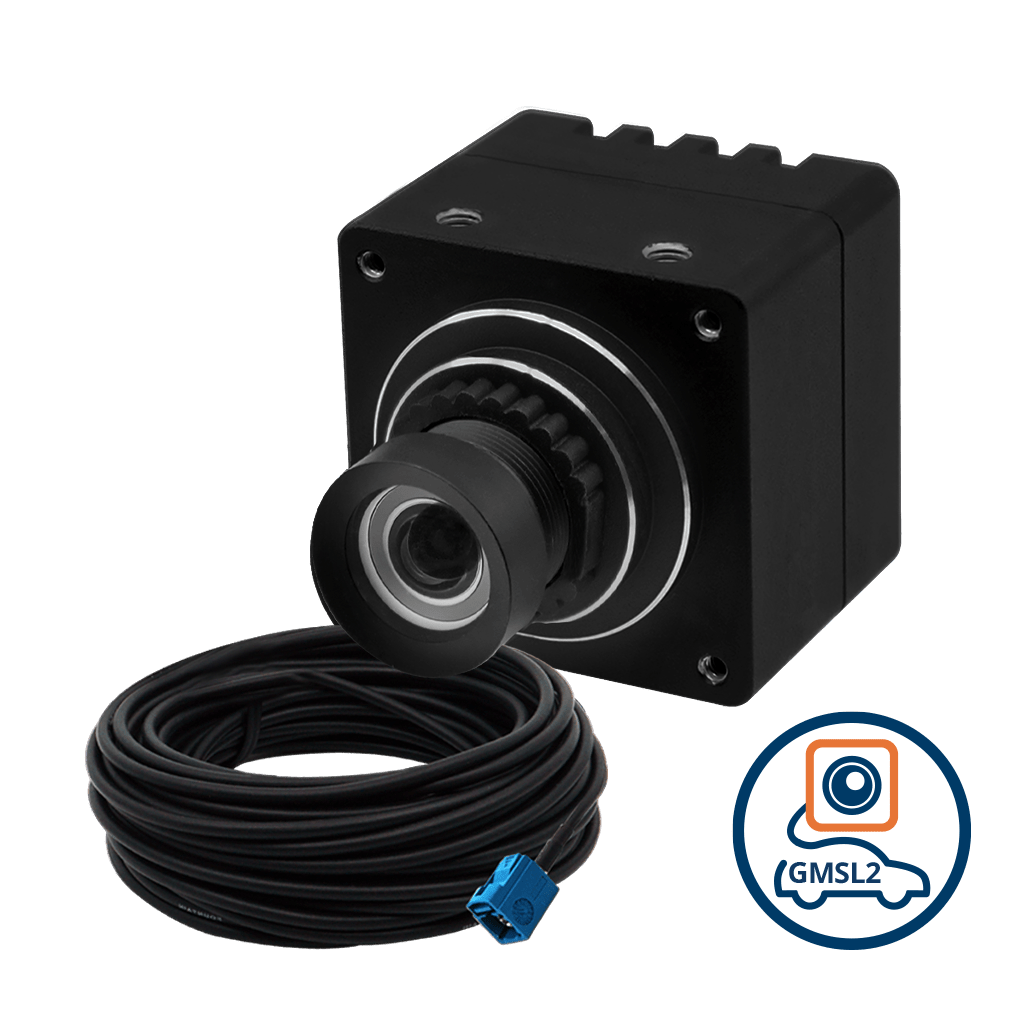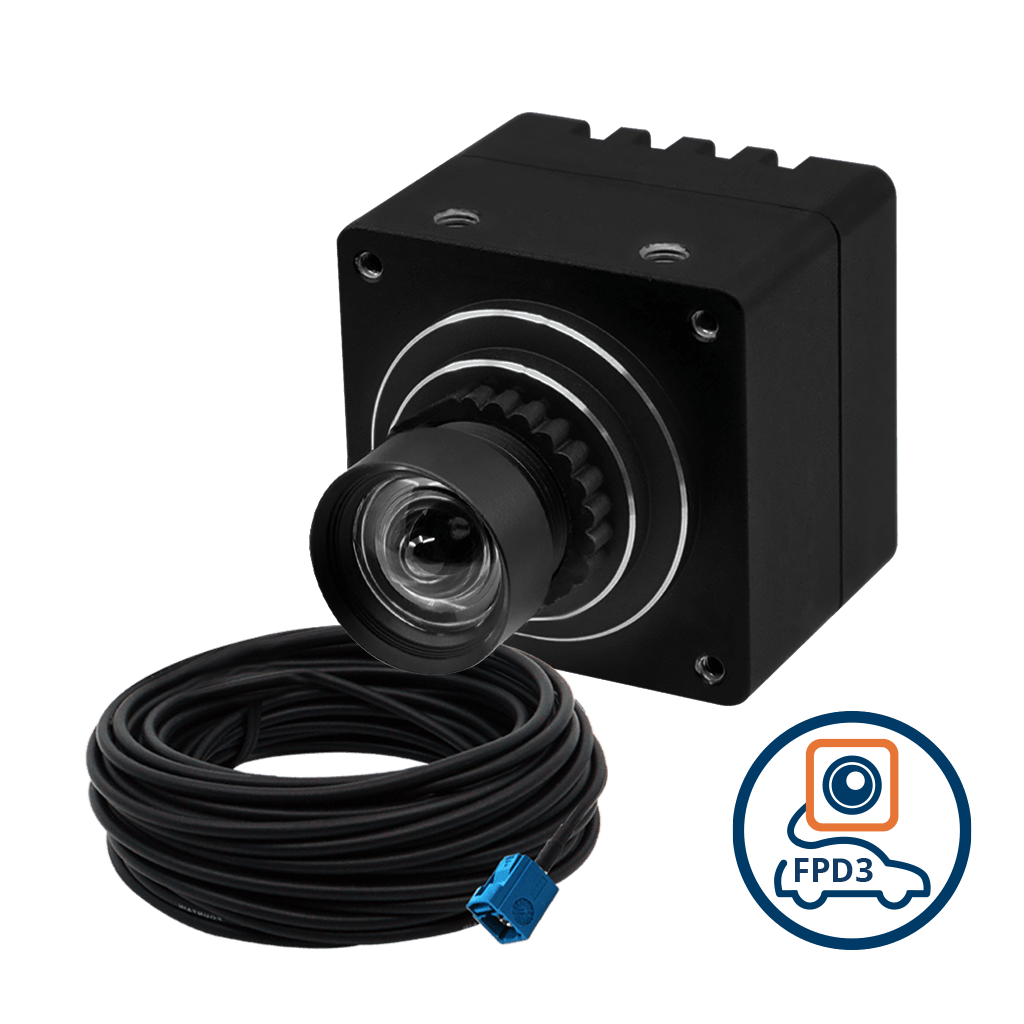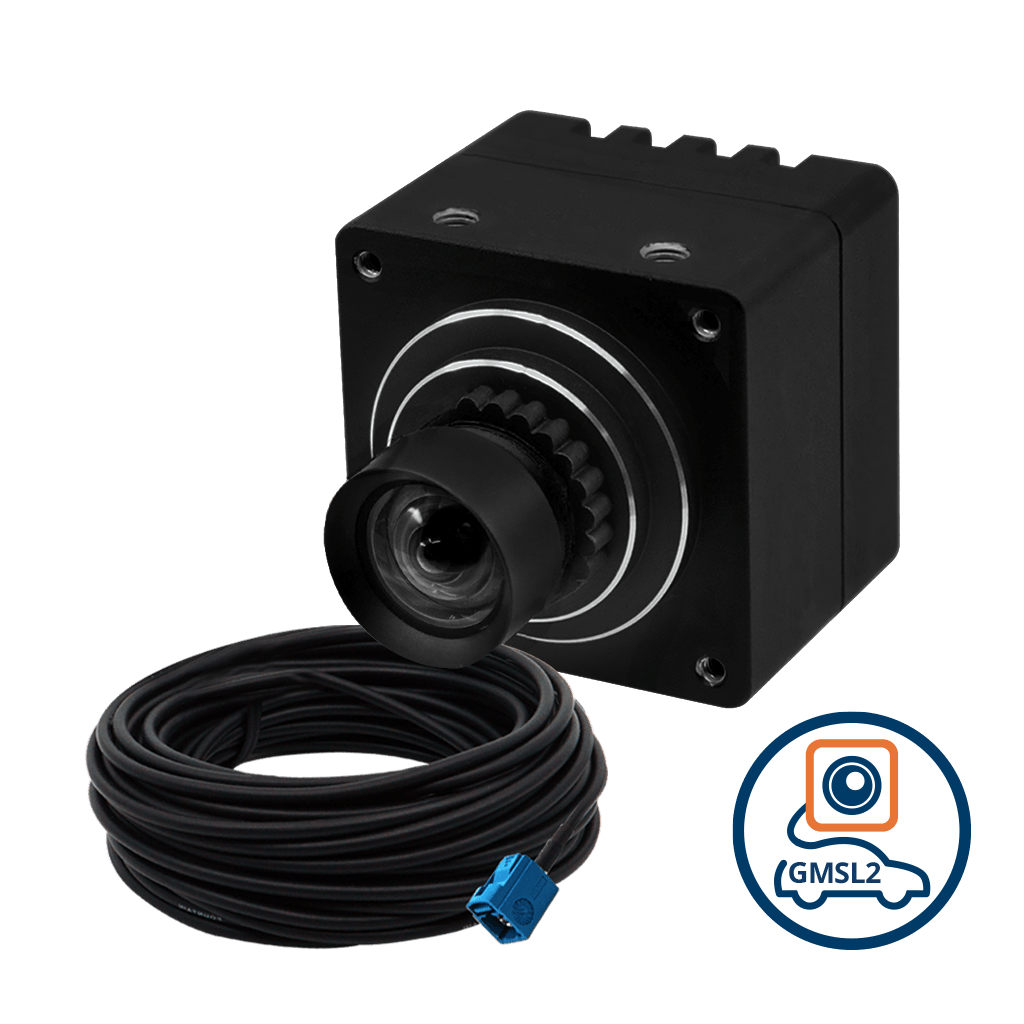The smart city revolution is transforming urban environments with advanced technologies that enhance daily life. Automated systems, especially autonomous vehicles like self-driving cars, smart buses, and delivery carts, are key to this change. These vehicles rely on sophisticated embedded cameras and sensors to operate independently, significantly advancing urban infrastructure. According to Statista, it is estimated that up to 10% of all vehicles will be autonomous by 2030.
Cameras are crucial for vehicle autonomy, providing real-time data for informed decisions. Self-driving cars, for example, use advanced camera systems to detect obstacles, read traffic signals, and monitor pedestrians, ensuring safe travel. A report states that autonomous vehicles could reduce traffic accidents by up to 90%, highlighting their impact on urban mobility. As smart mobility evolves, embedded cameras will remain central to achieving fully autonomous transportation systems.
What Is Smart Mobility?
Smart mobility encompasses a wide range of technologies and practices aimed at improving transportation efficiency, safety, and sustainability. It involves the integration of advanced systems and innovative solutions to enhance how people and goods move through urban environments. While cameras are a critical component, smart mobility extends far beyond their use. Next, let us look at the different ways in which smart mobility is implemented today.
Fleet Management
Fleet management is a crucial element of smart mobility, employing digital tools to monitor and optimize vehicle operations. This includes:
- real-time tracking,
- route optimization,
- predictive maintenance, and
- fuel efficiency improvements.
Fleet managers, with the help of data analytics, can make informed decisions that reduce operational costs and minimize environmental impact while ensuring reliable services.
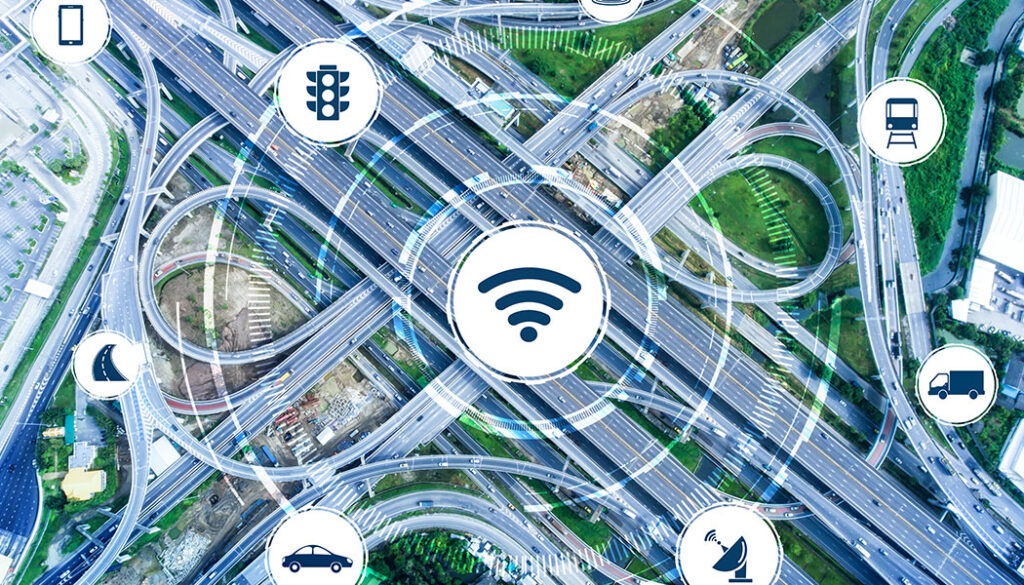
Connected Vehicles
Connected vehicles are another significant aspect of smart mobility. These vehicles come equipped with internet connectivity and communication capabilities that enable them to interact with other vehicles, infrastructure, and central management systems. This connectivity facilitates advanced features like:
- traffic management,
- collision avoidance, and
- enhanced navigation,
This contributes to a safer and more efficient driving experience.
Internet of Things (IoT)
The Internet of Things (IoT) plays a pivotal role in smart mobility by enabling the seamless integration of various devices and systems. IoT sensors monitor road conditions, traffic flow, and environmental factors, providing valuable data for optimizing transportation networks. For example, smart traffic lights can adjust their timings based on real-time traffic conditions, reducing congestion and improving the overall flow of traffic.
An example of smart mobility in action is the city of Barcelona, which has implemented a comprehensive smart transportation system. This system includes connected buses and taxis, smart parking solutions, and integrated bike-sharing programs, all coordinated through a central platform. These innovations have significantly improved urban mobility, reduced traffic congestion, and lowered emissions in the city.
What Is Camera-enabled Smart Mobility?
Camera-enabled smart mobility refers to the integration of advanced camera systems into various modes of transportation to enhance their capabilities and functionality. These cameras provide real-time data on the vehicle’s surroundings, enabling intelligent decision-making and improving safety and efficiency.
In smart buses, self-driving cars, and even personal mobility devices like autonomous wheelchairs, cameras play a vital role in navigation, obstacle detection, and overall situational awareness. Whether it’s monitoring traffic conditions, detecting pedestrians, or identifying obstacles, camera-enabled smart mobility solutions contribute to creating more reliable, autonomous, and adaptive transportation systems.
Let’s delve into how cameras are integrated into different types of smart vehicles:
Camera-Enabled Smart Vehicles
Smart Buses
Smart buses are equipped with advanced camera systems that serve multiple purposes. These cameras monitor the interior of the bus to ensure passenger safety and security, while also providing valuable data for optimizing operations.
For instance, in the event of a dispute or security incident, footage from onboard cameras can serve as valuable evidence for authorities. Moreover, exterior cameras aid drivers in maneuvering through traffic, especially in congested urban areas or tight spaces, reducing the risk of accidents and improving overall efficiency.
Take the example of Singapore’s Smart Bus initiative under the Smart Urban Mobility project. Through the analysis of anonymized data derived from commuters’ fare cards, the Land Transport Authority (LTA) can readily identify areas of high commuter activity. This enables them to enhance the management of bus fleets, thereby optimizing the efficiency of the bus system.
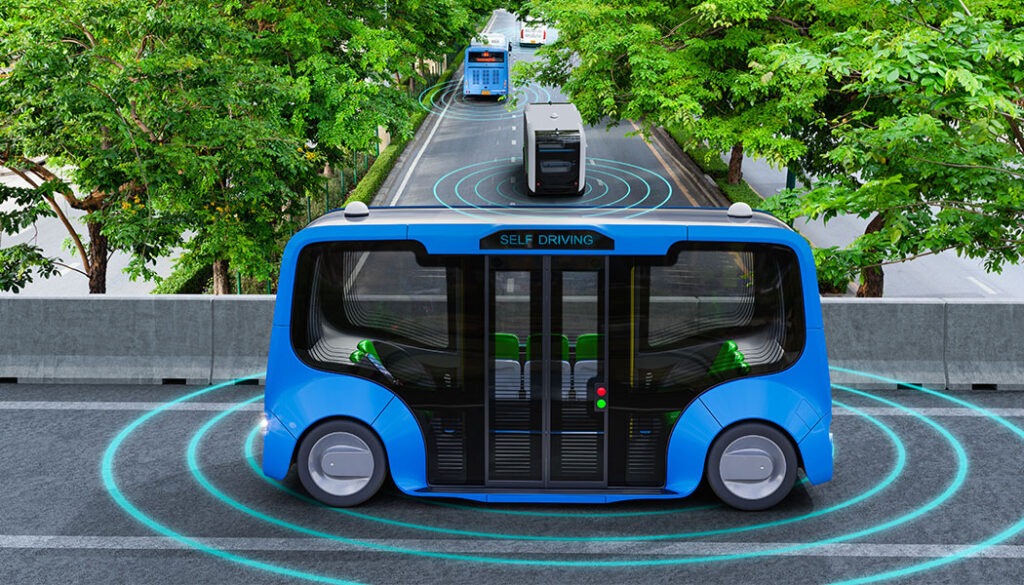
Self-Driving Cars
Self-driving cars are perhaps the epitome of camera-enabled smart vehicles, relying on sophisticated camera systems for perception and decision-making. These vehicles utilize a combination of 2D cameras and 3D cameras (such as LiDAR) to create a comprehensive understanding of their surroundings.
2D cameras capture high-resolution images that are crucial for tasks like object detection, lane keeping, and traffic sign recognition. Meanwhile, LiDAR cameras generate detailed 3D maps of the environment. This enables precise distance measurement and identification of obstacles. Together, these camera systems enable self-driving cars to navigate complex urban landscapes with unparalleled accuracy and reliability.
One notable example of self-driving car technology is found in Tesla vehicles, particularly with their Autopilot feature. Tesla’s Autopilot utilizes a combination of cameras, radar, ultrasonic sensors, and advanced software to enable semi-autonomous driving capabilities. For instance, Tesla vehicles equipped with Autopilot can automatically steer, accelerate, and brake within their lane on highways and limited-access roads.
Autonomous Carts
Autonomous golf carts represent a remarkable fusion of cutting-edge technology and leisurely recreation. These innovative vehicles utilize a sophisticated array of sensors, including cameras, LiDAR, and GPS, to navigate golf courses with precision and efficiency. Equipped with intelligent software algorithms, autonomous golf carts can autonomously steer, accelerate, and brake. This offers golfers a seamless and convenient transportation solution between holes.
The integration of camera systems allows these carts to perceive their surroundings in real-time, identifying obstacles, hazards, and other golfers on the course. This enables the carts to make informed decisions and navigate safely, enhancing both player experience and safety.
One pioneering example of autonomous golf cart technology is the autonomous golf cart developed by Carteav. This innovative solution integrates advanced camera systems, sensors, and artificial intelligence algorithms to create a seamless and efficient golfing experience.
Autonomous Wheelchairs
For individuals with mobility impairments, autonomous wheelchairs represent a groundbreaking advancement in personal mobility technology. These wheelchairs integrate cameras and sensors to provide users with greater independence and autonomy in navigating various environments.
Cameras mounted on the wheelchair continuously scan the surroundings, identifying obstacles or hazards in the user’s path. Using this information, the wheelchair can autonomously navigate around obstacles or provide audio/visual cues to assist the user in navigation.
The WHILL Autonomous Drive System is a prime example of camera-enabled smart technology in personal mobility devices. This system uses cameras and sensors to detect obstacles and guide the wheelchair safely through various environments. For instance, if the wheelchair encounters a narrow doorway, the cameras recognize the obstacle and automatically adjust the wheelchair’s path to navigate through the doorway smoothly, providing users with greater independence and mobility.
Essential Camera Features for Smart Mobility Systems
Here, we look into essential camera features that are paramount for the effective functioning of these systems:
Depth Perception
One of the most critical features required for cameras in smart mobility systems is depth perception. Traditional 2D cameras capture images, but lack the ability to accurately gauge distance. Depth perception, achieved through technologies like stereo vision or Time-of-Flight (ToF) sensors, allows cameras to perceive the three-dimensional structure of their surroundings. This capability is vital for tasks such as obstacle detection, lane keeping, and pedestrian tracking, enabling vehicles to navigate safely and effectively in complex environments.
Multi-Camera Support
To provide comprehensive coverage and a complete view of the vehicle’s surroundings, smart mobility systems often incorporate multiple cameras. These cameras are strategically positioned to capture images from different perspectives, minimizing blind spots and enhancing situational awareness. Multi-camera support enables advanced features such as 360-degree bird’s-eye-view parking assistance and precise object detection, improving the overall safety and performance of the vehicle.
Also read: Single Camera vs. Multi Camera – Similarities, Differences, and Applications
Long-Distance Transmission
In smart mobility systems, it’s essential for camera data to be transmitted reliably over long distances, especially in large vehicles or complex environments. High-quality cameras paired with robust transmission systems ensure that real-time video feeds can be seamlessly transmitted to onboard processing units or remote monitoring centers. This capability enables continuous monitoring of the vehicle’s surroundings and timely response to changing road conditions or hazards, enhancing both safety and operational efficiency. GMSL2 and FPD-Link III cameras are a great fit for smart vehicles where long-distance transmission is required.
Related: FPD-Link III Cameras – Working Principle and Applications in Embedded Vision
Low Latency
Low latency is crucial for smart mobility systems to respond swiftly to dynamic situations and make real-time decisions. Cameras with low latency ensure that video data is processed and transmitted with minimal delay, enabling vehicles to react promptly to obstacles, traffic signals, and other critical events on the road. This capability is essential for autonomous driving, where split-second decisions can mean the difference between safety and danger.
Industrial Grade Design
Cameras deployed in smart mobility systems must withstand the rigors of real-world operating conditions, including shocks, vibrations, extreme temperatures, and exposure to dust and moisture. Industrial-grade cameras are designed with ruggedized enclosures, high-quality connectors, and IP-rated protection against environmental factors. These cameras are built to endure harsh conditions without compromising performance, ensuring reliable operation in demanding automotive and transportation applications.
For instance, TechNexion’s cameras come with an IP68 enclosure that protects the camera from dust and water. They also have sturdy connectors that ensure the camera systems remain functional amidst shocks or vibrations.
TechNexion – Revolutionizing Mobility Through Vision
TechNexion is revolutionizing mobility through new-age embedded camera solutions tailored for smart vehicles. Our offerings span a wide range, including HDR cameras, global shutter cameras, high-resolution cameras, and long-distance cameras, addressing diverse needs in the smart mobility sector.
Notably, TechNexion provides multi-camera solutions, crucial for autonomous vehicles, ensuring comprehensive coverage and enhanced situational awareness on the road. With our innovative camera technology, TechNexion is paving the way for safer, more efficient, and autonomous transportation systems.
Get in touch with us to explore how TechNexion’s innovative camera solutions can help you revolutionize your mobility solutions.
Related Products
Get a Quote
Fill out the details below and one of our representatives will contact you shortly.

